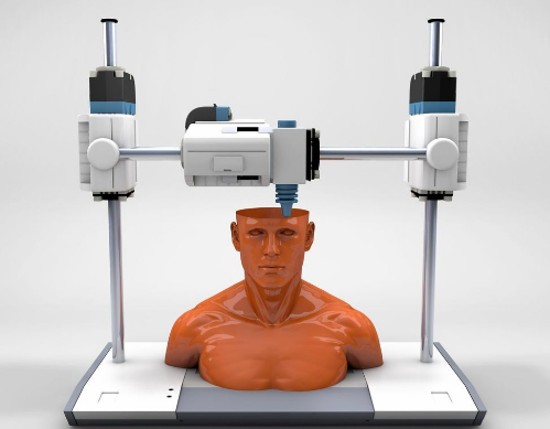Bioprinting today is changing how doctors treat patients by creating replacement parts using biomaterials that replicate bone, blood vessels and the cellular scaffolding upon which joints and ligaments can be regenerated or restored. The ink of 3D bioprinters is living and most often consists of stem cells harvested from the patient.
Researchers, however, are exploring a future where bioprinting will go below the sub-cellular level in constructing living tissue and biopolymers at a nanoscale. States Professor Seung Soo Oh, of Pohang University in South Korea, “The significance of this research lies in proving for the first time the possibility of printing 100% functionally and structurally active biopolymers in ultrafine 3D structures.”
What are biopolymers? They constitute the building blocks of cells. And now, research being done by Professor Oh and others, published recently in Advanced Science, indicates the development of technology to 3D print biopolymers molecule by molecule.
Pohang isn’t the only place where researchers are pushing the technological limits of 3D bioprinting. Back in 2018 scientists at the Lawrence Berkeley National Laboratory and UC Berkeley invented a way to synthesize DNA making DNA printing a future possibility. With the work at Pohang combined with Berkeley, we are a step closer to bioprinting DNA.
For researchers and bioengineers, the ability to 3D-print DNA opens new opportunities that can potentially revolutionize medicine. Imagine a printer that not only can produce living organs and tissues, but also DNA-specific constructs at the sub-cellular level including RNA, proteins, genes, and individual strings of nucleotides.
If unfamiliar with the term nucleotides, these are the fundamental chemical components of nucleic acids. We have named them adenine (A), thymine (T), guanine (G), and cytosine (C). They pair to form chemical bonds with A and G and C combining to form DNA strands. In other words, they are the building blocks of life as we know it here on Earth.
When you start bioprinting nucleotides, personalized medical therapies take on a whole new meaning. It means you can print healthy genes and replace defective ones that cause congenital diseases.
Where CRISPR/Cas9, also developed at UC Berkeley, gives researchers and medical practitioners the ability to cut out individual gene sequences and replace them with healthy ones, now with DNA bioprinting it becomes possible to print an entire chromosome. Imagine what this could mean in cancer treatment and for many other intractable diseases.
The bioprinting dream, however, goes even further. Using the technology will revolutionize agriculture, pharmaceuticals, manufacturing, and even the fuels we make to create energy. Reinforcing this extended capability, Professor Oh states that 3D bioprinting isn’t restricted to just the “bio.” He sees its use with “various materials with diverse optical and electrical properties, including complex materials such as quantum dots and carbon nanotubes.”
Combining the South Korean advancements in nanoscale 3D printing of biopolymers with the work at Berkeley and biomedical engineers may soon see a future where we will print genes, chromosomes, replacement organs and tissue.
This is not Frankenstein’s monster pieced together and made animate, but rather a technological advancement that will allow us to reconstruct our damaged selves from the DNA level and up and even integrate nanomachines and non-biological components.
When Ray Kurzweil first envisioned what he called the Singularity, it involved the merging of human and artificial intelligence, in other words, what Star Trek would call a “mind meld.” I don’t think Kurzweil envisioned integration at the level of DNA.
His prediction of 2045 as the date when humans would become one with our technology is still 22 years in the future. But the evolution of 3D printing of biology with technology capable of adding integrated nanosized circuits puts a new spin on what the Singularity will be and when it might occur.









